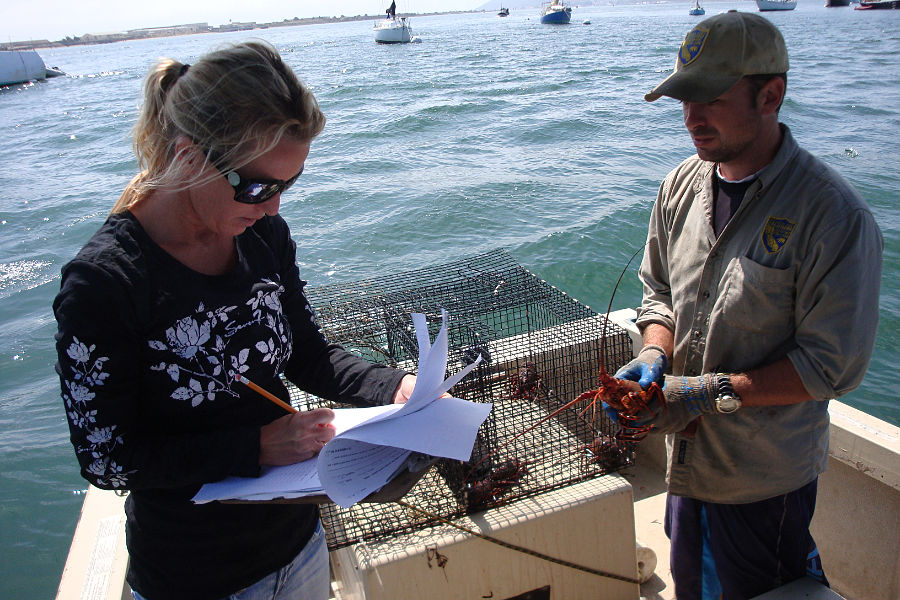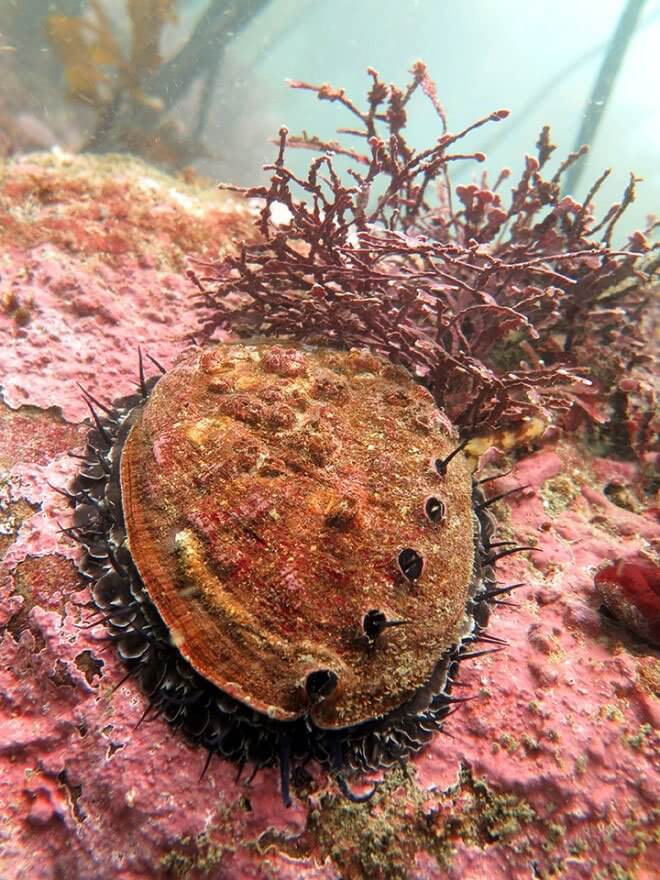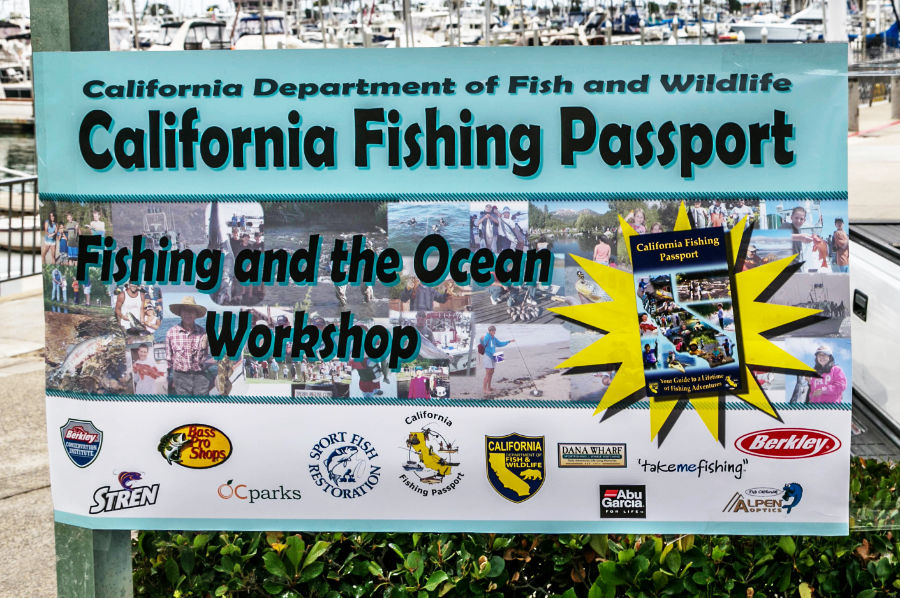This appendix draws information and conclusions from a report by The Nature Conservancy that was prepared during the information gathering phase of the Master Plan amendment process (Wilson et al. 2016(opens in new tab)). It provides additional details regarding the potential role of partnerships in fisheries management. It also elaborates on the varying levels of capacity and longevity that stakeholder organizations should possess to effectively partner with the Department on certain tasks. As with the other appendices, it is anticipated this overview will continue to be expanded and refined as part of Master Plan implementation so it can serve as an effective resource to managers and stakeholders.
Fishery partnerships
As discussed in Chapter 8, partnerships between agencies, Tribes and tribal communities, fishing communities, NGOs, funders, and others span a broad continuum and differ in how responsibility and authority are shared. Regardless of the exact arrangement, the principles of partnerships typically infer the sharing of some management or governance tasks with non-government actors, including research and monitoring, regulatory scoping, decision-making, enforcement and surveillance, and conflict resolution.
Where a particular fisheries partnership falls on this continuum depends on numerous features, particularly the complexity of the task to be addressed and the capacity of the partnering entities. On the low end of this continuum, individuals might participate in a one-time stakeholder engagement process that requires minimal investment and commitment. The opposite end of this continuum includes formal partnerships typically laid out in a Memorandum of Understanding that details the partnering entities’ contribution to a shared management goal to be achieved by sustained collaboration over a long time period. Between these two extremes lie numerous opportunities for partnerships with varying formality, investment, and duration. Key to forming a successful partnership is understanding the capacity of partnering individuals or entities to fulfill what is expected of them. The discussion below identifies specific common tasks that the Department engages in as part of management. These tasks are generally ordered by the degree of capacity and longevity required on the part of stakeholders (see Figure P1).
 Figure P1. A continuum of partnership-based approaches (adapted from Wilson et al. 2016(opens in new tab)). The management tasks and types of partnerships are arranged along this continuum in terms of how much organizational capacity, funding and longevity is required for successful partnerships to help meet management objectives or tasks.
Figure P1. A continuum of partnership-based approaches (adapted from Wilson et al. 2016(opens in new tab)). The management tasks and types of partnerships are arranged along this continuum in terms of how much organizational capacity, funding and longevity is required for successful partnerships to help meet management objectives or tasks.
All partnerships require investment. In considering new partnership opportunities to improve fisheries management, the Department will need to evaluate whether a proposed partnership is mutually beneficial. The investment of funds, staff time, and other resources must be weighed against the benefits that will be realized from the partnership. As detailed below, some management activities likely lend themselves to beneficial partnerships more than others. Nevertheless, well-conceived fisheries partnerships can enhance the Department’s ability to fulfill its mission and achieve the objectives of the MLMA.
 A CDFW biologist and a San Diego State University graduate student collecting biological information on spiny lobster as part of a collaborative research project. (CDFW photo)
A CDFW biologist and a San Diego State University graduate student collecting biological information on spiny lobster as part of a collaborative research project. (CDFW photo)
Benefits of partnerships
When designed effectively and thoughtfully, partnerships are a powerful tool to support short- and long-term management and conservation goals, as well as strengthen the scope and integrity of data used to inform management decisions. Empowering Tribes and tribal communities, fishermen, local community members, and NGOs to become active partners in management can help tailor regulations and decisions to reflect current fishing practices and realistic on-the-water conditions. Localized knowledge and expertise can provide additional context to improve approaches to management. Studies have found that fishermen that possess an understanding of the rationale and legitimacy for certain decisions typically operate more responsible fishing practices and exhibit better compliance (McCay and Jentoft 1996).
In the face of increasingly variable ocean conditions, partnerships provide an effective mechanism to promote ecological and social resilience as discussed in Chapter 11. Fisheries management systems that rely on cooperative approaches and partnerships are often better equipped to address environmental change than conventional, top-down approaches (McClenachan et al. 2015). Resource users and harvesters, such as fishermen, are often first to notice changes in the environment (Dietz et al. 2003). Furthermore, effective climate change adaptation in marine fisheries demands improved knowledge of future ecosystem states. Developing collaborative partnerships with university researchers provides the opportunity to integrate best-available climate science directly into fisheries management decisions.
While the involvement of stakeholders as partners can require an investment of resources to support high start-up costs (Nielsen and Vedsmand 1997; Coglan and Pascoe 2015), the long-term investment in building support and cultivating stewardship offers ecological, economic, and social benefits, as well as direct benefits to fisheries managers. Below are examples of the ecological, economic, social, and direct benefits that have been realized through fisheries partnerships.
Potential ecological benefits
- Maintenance of sustainable stock levels that are represented by long-term increases in abundance and stock health (Gutiérrez et al. 2011; Defeo et al. 2014).
- Improved conservation of sensitive habitats, nursery grounds, and spawning grounds (Pinkerton 2009).
Potential economic benefits
- Decreased cost of management for government agencies, especially in high-value fisheries (Coglan and Pascoe 2015).
- Increased or maintained revenue streams through stabilized landings, and prevention of fishery collapse by ensuring assessments and harvest levels reflect actual stock sizes (Gutiérrez et al. 2011).
Potential social benefits
- Increased community empowerment (Gutiérrez et al. 2011) and a more democratic and participatory system where the interests of government, fishermen, and community members become better aligned.
Potential benefits to the Department
- Increased support for cost and task-sharing opportunities (Pinkerton 1994; Pinkerton 2009), creating the potential for more efficient and productive management.
- Support and buy-in for fisheries management regulations and policies leading to enhanced compliance and better working relationships with industry.
 Red abalone. (CDFW photo by A. Maguire)
Red abalone. (CDFW photo by A. Maguire)
Success of partnerships
Lessons learned in California and elsewhere provide some guidance and best practices for forming successful partnerships. The following elements are crucial to realize the potential of partnerships to contribute to fisheries management in California:
- The need for durable and lasting fisheries organizations and strong fishing leadership.
- The important role of change agents.
- Access to consistent funding by stakeholder organizations.
- Multi-directional generation and exchange of knowledge/information.
- Presence of strong top-down governance and management regulations.
- Ability to build trust and social capital.
- The degree to which management decisions are decided upon in an open and transparent process.
Fisheries organizations and fishing leadership
Fisheries organizations, from legislatively-mandated arrangements to volunteer associations, can differ in their motivation and capacity largely depending on the size and diversity of the fleet. Typically, high-valued fisheries with complex regulations tend to be better organized and have identifiable leadership that can play a direct role in informing and/or overseeing management decisions. Organizations that have a formal legal structure can more readily offer more secure partnerships with agencies like the Department. Fishery organizations that do not have a legal structure have greater opportunities with being successful in long-term partnerships if they are designed and/or equipped to be durable, resilient, and flexible333333.
Change agents
Through their role as intermediaries, external change agents or “bridging organizations” can help empower fishermen, scientists, and Department staff to enhance their capabilities and available resources (Pomeroy et al. 2001). Change agents can provide resources and expertise in plan development, brainstorming, problem solving, information gathering and sharing, and participatory facilitation and communication. Change agents are often NGOs, academic and research institutions, or development agencies that rarely play a role in decision-making. Rather, they are objective and seek to expedite the partnership process by setting in place a process of discovery and social learning. External change agents’ connection with local communities, their ability to focus on community objectives, and linkages with donors and other supportive organizations are factors that favor their role.
Consistent funding
Partnerships take time to become established and can take years to evolve into a process that can support collaborative decision-making. Consistent funding sources for fishery organizations and agencies contribute to the success of partnerships, providing the security for both resource managers and fishermen to invest time and resources in establishing relationships, identifying common goals, implementing collaborative efforts, and evolving from lessons learned.
Typically, there is infrastructure established to support fisheries partnerships that evolve beyond initial start-up funds and grow to diversify their funding portfolio. Fundraising and project management skills, good financial judgment, and political savvy increase a partnership’s likelihood of long-term viability and success. For example, partnerships involving researchers and/or NGOs skilled in grant writing and aware of funding cycles can play important roles in the long-term sustainability of a partnership. Additionally, these entities may have mechanisms in place to receive funding from various sources (e.g., NGOs) and the Legislature has clearly recognized the need and value for alternative sources of revenue to fund the Department’s necessary marine conservation, restoration, resource management, and protection responsibilities (§710.7(c)). Roles and responsibilities of those charged with developing and implementing strategies to acquire partnership funding should be fully outlined to ensure everyone involved in the partnership is operating within the same expectations.
Information exchange
Generating and/or sharing information between partners can take many forms. Informal, one-on-one conversations between fishermen and resource managers can be used to address clarifying questions or to share information about what fishermen are experiencing on the water. Agency staff may use surveys to poll fisheries lacking in fisheries-independent data, and researchers may request fishermen help to interpret fisheries-dependent data.
Involving fishermen in the gathering, interpretation, and reporting of fisheries management data is considered a gateway or entry point to more comprehensive forms of collaborative management (Trimble and Berkes 2013). Fishermen involved in these projects typically see value in their participation in a collaborative research team and view their involvement as direct recognition by resource managers and academic scientists of the quality and importance fishermen’s input in shaping research questions and designing surveys (Pinkerton 2009). Involving fishermen from the “ground up” helps build trust in the scientific process, credibility in the results, and creates an atmosphere where fishermen play a role in championing the research project within their fisheries, ports, and communities (Pinkerton 2009). The exchange of ideas and information can be equally as valuable to Department staff involved in the partnership who gain local and experiential knowledge (Hovel et al. 2015).
Anticipated changes in regulations
Resource managers, agency staff, decision makers, and funders are increasingly interested in understanding the motivations for the continued participation and mobilization of fisheries partnerships. Anticipated changes in management regulations can act as a catalyst for activating or reenergizing fisheries partnerships. International experiences show that fisheries management regulations that are developed without the support of fishermen are less likely to succeed due to limited involvement, and therefore acceptance or agreement (Hanna 1995).
Establishing trust and developing social capital
Trust is an essential building block to successful fisheries partnerships and efficient fisheries management. Investment in relationship-building and establishing confidence across partnership participants should be considered and integrated. Solid and long-lasting relationships can also act as an incentive to maintain ongoing collaborative efforts. The core concept of social capital is “interactions among individuals” with the inherent goal to strengthen social interactions in and between groups concerned with a given issue.
 Banner for the California Fishing Passport program. (CDFW photo)
Banner for the California Fishing Passport program. (CDFW photo)
Potential role of partnerships in management
Six fundamental management tasks that can benefit from fisheries partnerships and the degree of stakeholder capacity required to effectively partner on each are described in Table P1.
Table P1. Overview of the level of capacity needed for stakeholder groups to effectively partner with the Department to accomplish particular management tasks (adapted from Wilson et al. 2016). The three attributes (representativeness, funding, and longevity) reflect a prospective partner’s capacity.
| Management Task
|
STAKEHOLDER CAPACITY
|
| Representativeness
|
Funding
|
Longevity
|
| Prioritization
of Fisheries Management
|
Medium
|
Low
|
Low
|
| Fishery Specific
Planning
|
High
|
Medium
|
Low
|
| Research and
Monitoring
|
Low
|
Medium
|
Medium
|
| Stock Assessment
|
High
|
High
|
Medium
|
| Decision Rules
|
High
|
Medium
|
High
|
| Compliance and
Enforcement
|
High
|
High
|
High
|
- Representativeness is defined by whether the group represents the broader constituency through democratic or otherwise egalitarian means. If a low level of representativeness is required, it means that relatively few members of the fishery may participate effectively in a partnership. A high level of representativeness indicates that to successfully partner in a particular management task, a more representative constituency is needed.
- Funding refers to the ability to raise funds for participatory processes. A small group of fishermen may score on the low end, whereas a marketing association (e.g., California Sea Urchin Commission) or NGO may score towards the higher end.
- Longevity refers to the ability of the group to participate as a lasting partner without concern for erosion of duties and responsibilities over time. A small group of stakeholders may not be as durable as an academic institution for example.